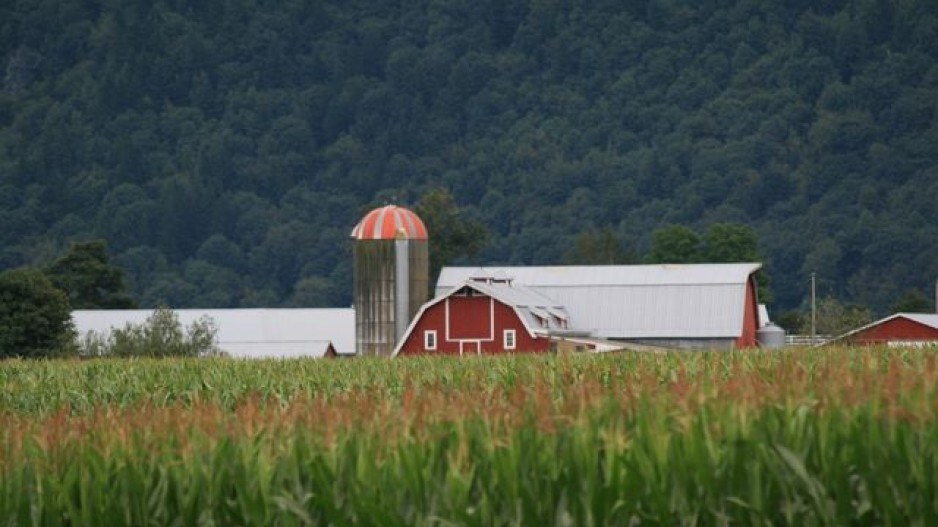Both Metro Vancouver and the Agricultural Land Commission (ALC) have identified development and land speculation as theats to the resilience of regional agriculture.
As provincial and local governments look to build more housing supply in the region, there is pressure to repurpose agricultural land for development, according to those who spoke to Glacier Media. But so far, this pressure has not led to obvious changes within the Agricultural Land Reserve (ALR).
“It’s a pressure and I’m sure Metro Vancouver is identifying it, because the ALR is sitting there and densification is happening all around, but the legislative framework discourages the ALR from being removed for non-farm-use activity,” said Kim Grout, CEO of the ALC, adding that this has always been a pressure since the ALR’s conception in 1973.
While there are safeguards in place, Carla Stewart, senior planner in agriculture and food security at Metro Vancouver, does see some “picking away” at the boundaries of the ALR.
Land that is degraded or hasn’t had proper care over time may not be able to support agriculture “and some of that may have come from urban development next to it,” she said.
Jennifer Dyson, chair of the ALC, noted in the commission’s 2021-2022 annual report that land within the ALR can be seen as property that is “in waiting” for other uses, and relatively cheaper and less encumbered than other land. Stewart agrees.
“A lot of folks look at agricultural land as an area that we can use to accommodate more urban development. So, there’s certainly that mindset out there,” she said.
In Metro Vancouver, there are approximately 60,000 hectares of protected ALR land, according to region’s Metro 2050 strategic plan. Currently, there is no concrete understanding of how much land in the region has been taken out of the ALR or excluded over the years due to urban development, Stewart said.
Provincially, 190 hectares of land were approved for inclusion in the ALR in 2021 and 2022, according to the ALC’s annual report. Over the same period, 90 hectares were approved for exclusion.
In February, Surrey City Council voted in support adding 89 hectares of active farmland to the ALR, according to the City of Surrey. This is in line with the ALC’s proposal to add 123 hectares of federally owned lands in Surrey’s Campbell Heights area to the ALR. The remaining 34 hectares of forest land did not receive support from council to be added.
“It is crucial that we protect this invaluable, high-yield farmland to help ensure future food security in the region and across British Columbia,” said Mayor Brenda Locke in a statement issued after the council vote. “That is why council voted in favour of protecting this irreplaceable farmland that yields an estimated 50 million servings of vegetables every year.”
Locally, there is pressure on food security, says Stewart, but she noted that it is too early and too complicated to understand how development demands may affect or exacerbate the problem.
“It’s not it’s not a straightforward path, it’s not an easy answer. Does [exclusion] happen? Yes. Are there challenges against keeping agricultural land for agricultural purposes? Yes,” said Stewart, adding that B.C.’s reliance on food imports further muddles the issue.
If land in the ALR were to become available for broader uses, Tsur Somerville, a professor at the University of British Columbia and senior fellow at the Centre for Urban Economics and Real Estate, said he expects a “vast swath” would be developed. But he said he doesn’t think it would significantly improve Greater Vancouver’s housing supply challenges. Because of the land’s largely suburban location, development on it likely wouldn’t yield high-density housing, he said.
“It’s more a source of where you build single-family housing and industrial, rather than it being absolutely necessary to build more housing. I think the bigger constraint on housing has historically been the land use process in land that’s already developed,” he said.
“It’s a little bit of a red herring within the sort of total housing supply story, but it’s not if what you want to do is build more single family housing,” Somerville added.
Rather than develop the ALR, he suggests that changing the single-family zoning regulations in Vancouver, Burnaby and Richmond would yield better results.




